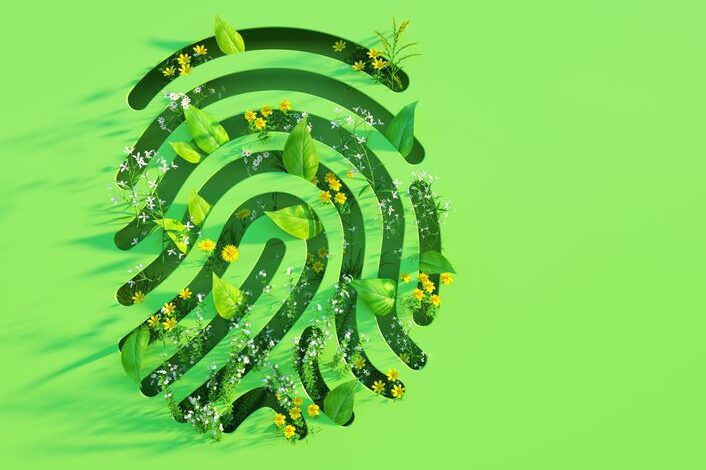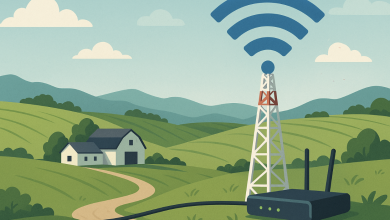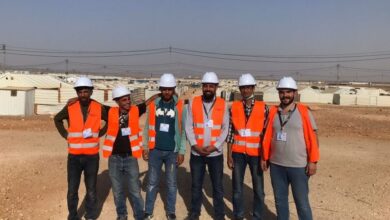
A top challenge for industry and governments in the coming decades will be deciding how they meet the power needs of energy-thirsty AI workloads.
Perched on Europe’s western fringe, with strong prevailing winds blowing in from the Atlantic Ocean, Ireland is better placed than most countries to meet this emerging demand with renewable power. Building on its geographical position, the country plans to generate up to 80% of its electricity from renewable sources by 2030, with 9GW to come from onshore wind resources and at least 5GW from offshore wind.
Maximising Use of Wind Resources
Onshore wind is one of the most cost-effective sources of renewable energy and is already a major contributor to Ireland’s renewable energy supply chain. Today, more than 300 wind farms across the country generate over 5GW of energy, providing almost one third of the island of Ireland’s electricity in 2024. That’s enough to rank Ireland third in the world for installed wind-power capacity per capita.
However, an even greater source of wind power is just off Ireland’s coast. Ireland’s total maritime area is more than 10 times the size of the country’s landmass and one of the largest marine areas in the EU. The strong and consistent wind supply in this area makes it a prime source for wind energy.
Shallow seabed off the Irish coast can support fixed offshore turbines, but it will be floating turbine technology that will help Ireland realize its ambitious offshore energy goals of having 5GW of offshore wind energy in development by 2030 and 37GW by 2050. By adhering to its offshore wind industrial strategy and achieving these goals, Ireland will be able to meet its domestic energy demands and create excess capacity in as little as 10 years to support its growing energy needs.
An Island of Ambition for Renewable Energy
While much work is still in the planning stages, Ireland is charging ahead on several fronts to meet its aggressive offshore energy targets.
For instance, the country’s Private Wires Policy seeks to unlock private-sector resources as Ireland builds a new energy grid. The Shaping Our Offshore Energy program will connect offshore wind power to the Ireland’s onshore grid.
Floating offshore wind technology has not yet developed to a point of widespread commercialisation like fixed wind turbines. But to help accelerate the development of this technology, the Irish government is developing the Atlantic Marine Energy Test Site (AMETS) on Ireland’s western coast. Industry will be able to test floating offshore technologies at this site to prove their resilience in real-sea conditions and then optimise them prior to large-scale deployments.
The Irish government has also proposed the development of an Offshore Wind Centre of Excellence (OWCE). This industry-led facility would bring together Irish-based offshore wind supply chain companies, government agencies and higher education institutions to accelerate new digital technologies and solve top industry challenges.
Solar energy, with its scalability and declining costs, is also a crucial component of Ireland’s energy transition, with ambitions for 8GW from solar power by the end of the decade.
These plans, taken together, will help the country meet its targets to cut carbon emissions by 51% by the end of the decade and reach net-zero carbon emissions no later than 2050.
Making AI part of the solution
AI can play a part in optimising the potential of renewables. For example, AI algorithms can help determine the best placement of wind turbines, enhancing their efficiency and reducing maintenance costs. Predictive analytics can forecast weather patterns and energy production, enabling better integration of wind energy into the grid. Moreover, AI-driven data analysis can help identify the most suitable sites for new wind farms, considering environmental, economic, and social factors.
Ireland is aiming to be a research leader in such AI solutions.
For example, researchers from CeADAR, Ireland’s national center for applied AI, and SSE Airtricity, an Irish renewable energy company, have developed an AI tool called FREMI to accurately forecast wind energy production that is now deployed at 21 windfarms across Ireland. Funded by the Sustainable Energy Authority of Ireland (SEAI), the project is helping improve energy market reliability, supports decarbonisation goals, and aids compliance with electricity market rules.
Additionally, Ireland is working with its European Partners on creating AI tools to improve the efficiency, resilience, and sustainability of Europe’s energy systems.
One example of this is the AI-EFFECT project, led by Dublin-based EPRI Europe, the European branch of the Electric Power Research Institute. It is developing an EU Testing & Experimentation Facility for AI applications that could boost the efficiency and sustainability of Europe’s critical energy infrastructure. Funded by Horizon Europe, the EU’s flagship research and innovation programme, the three-year initiative brings together 19 organizations to run real-world demonstrations across Europe, supporting smart energy solutions and decarbonisation.
Powering the Future
As the global demand for AI continues to rise, so too does the urgency to find sustainable ways to power it. By leveraging its natural resources, Ireland is positioning itself to be a world leader in clean energy; its ambitions to deliver an abundant, reliable indigenous supply of green energy can help to drive clean, sustainable growth in energy-intensive sectors. Coupled with its expertise in applied AI, Ireland offers a compelling model for how countries can align digital growth with climate goals.
About the author
Ken Whitelaw is a dedicated Sustainability Manager at IDA Ireland, where he plays a pivotal role in guiding multinational companies towards more sustainable operations in Ireland. With a strong academic foundation from Trinity College, Dublin, Ken specializes in key areas such as decarbonization, water stewardship, circularity, pollution control, and biodiversity. His expertise and commitment are instrumental in fostering environmentally responsible practices that align with Ireland’s sustainability goals.




